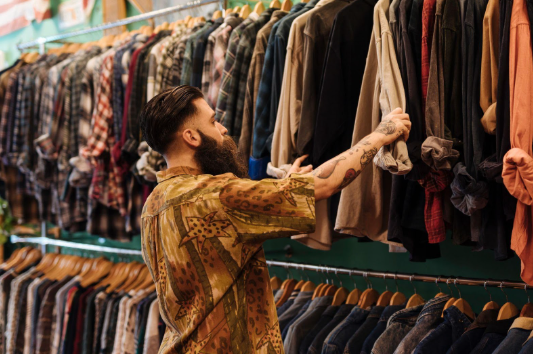Why Italian Vintage Wholesale Fashion Is the Smartest Choice for B2B Retailers in 2025

In the ever-shifting landscape of fashion retail, italian vintage wholesale stands out as one of the most strategic moves for B2B retailers in 2025. The demand for unique, sustainable, and profitable inventory has never been higher, and sourcing vintage clothing from Italy checks every box. From unmatched quality to aesthetic appeal and eco-conscious value, Italian vintage has become more than a niche — it’s a competitive advantage.
A Timeless Appeal That Sells
Unlike fast fashion, vintage clothing doesn’t lose relevance. Italian vintage offers curated pieces with a story, texture, and style that new garments simply can’t replicate. Whether it’s a leather jacket from Florence, denim from the ’90s, or silk blouses that channel Milanese chic — every item feels like a treasure. This emotional value translates directly into higher margins and customer loyalty for boutique owners and resellers.
Moreover, the timeless nature of vintage allows retailers to move away from seasonal overstock problems. Many Italian vintage suppliers offer mixed bales or handpicked collections designed for year-round rotation, ensuring that inventory remains sellable even months after purchase.
Italian Quality and Craftsmanship
Italy’s reputation for quality fashion is not a coincidence — it’s a legacy. Italian vintage clothes are often crafted with superior fabrics, tailored details, and durable finishes. These garments were made to last, which is why they’re still in excellent condition decades later.
When sourcing through italian vintage wholesale platforms, B2B buyers tap into collections that include brands like Moschino, Valentino, Versace, and a wealth of high-quality unknowns. This level of craftsmanship adds serious resale value and sets independent retailers apart from mass-market competitors.
Sustainability That Makes Sense (and Money)
2025 is a pivotal year in fashion’s sustainability journey. Consumers — especially Millennials and Gen Z — are turning away from overconsumption and toward circular fashion. By investing in vintage, retailers align with eco-values while offering products that are still stylish and affordable.
Wholesale vintage from Italy is particularly attractive because of the way it’s sorted and presented. Leading suppliers pre-wash, repair, and grade items to minimize waste for resellers. That means fewer unsellable pieces and more consistent profit margins — all while keeping clothing out of landfills.
Flexibility for All Retail Models
Whether you’re running a brick-and-mortar boutique in Amsterdam, a Depop store in London, or a multi-channel resale brand, italian vintage wholesale adapts to your business. Many suppliers offer flexible ordering options: by weight, by category, or curated collections tailored to your market.
This flexibility enables small businesses to test new styles or grow collections without overcommitting capital. At the same time, larger retailers can scale their vintage lines with confidence, knowing that supply can meet demand — with style and authenticity.
A Cultural Capital for Vintage Fashion
Italy isn’t just a supplier — it’s a source of inspiration. The fashion sensibility of Italians — from tailoring to everyday elegance — influences vintage selection at the source. Retailers sourcing from Italy are often able to access items with a distinctly European feel: bold prints, rich textures, and quality garments that reflect decades of style history.
For fashion entrepreneurs, this means standing out in a crowded market. Offering Italian vintage adds an element of “curated culture” that speaks to modern shoppers looking for authenticity over algorithms.
Conclusion: The B2B Edge in 2025
In a market saturated with sameness, italian vintage wholesale gives B2B retailers a tangible edge — through quality, sustainability, flexibility, and timeless style. It’s not just about selling clothes; it’s about selling stories, values, and identity. And in 2025, that’s exactly what fashion customers are looking for.
Retailers who tap into this opportunity now will not only meet the moment — they’ll help define the future of fashion.





